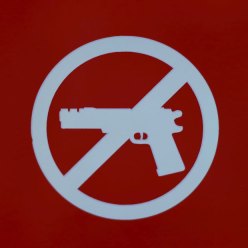How should church members and staff respond to an active-shooter incident prior to the time that law enforcement officers arrive?
The Federal Emergency Management Agency’s recently released Developing High Quality Emergency Operation Plans for Houses of Worship states:
No single response fits all active shooter situations; however, making sure each individual knows his or her options for response … [can help them] react decisively [and] save valuable time. Depicting scenarios and considering response options in advance will assist individuals and groups in quickly selecting their best course of action.
The Guide offers these suggestions for responding to an active shooter:
Congregational meetings
The Guide states that “it may be valuable to schedule a time for an open conversation regarding this topic. Though some congregants or staff may find the conversation uncomfortable, they may also find it reassuring to know that as a whole their house of worship is thinking about how best to deal with this situation.”
Respond immediately
It is common for people confronted with a threat to deny the danger rather than respond. The Guide notes that “an investigation by the National Institute of Standards and Technology into the collapse of the World Trade Center towers on September 11, 2001, found that people close to the affected floors waited longer to start evacuating than those on unaffected floors.” Similarly, during the Virginia Tech shooting, “individuals on campus responded to the shooting with varying degrees of urgency.”
The Guide recommends that churches “train congregants and staff to skip denial and to respond immediately.” For example, “train congregants to recognize the sounds of danger, act, and forcefully communicate the danger and necessary action.”
Run
If it is safe to do so, the first course of action that should be taken is to run out of the building and far away until in a safe location. Congregants and staff should be trained to:
Leave personal belongings behind;
Visualize possible escape routes, including physically accessible routes for individuals with disabilities;
Avoid escalators and elevators;
Take others with them, but do not stay behind because others will not go;
Call 911 when safe to do so;
Let a responsible adult know where they are.
Hide
If running is not a safe option, the Guide recommends that church members “hide in as safe a place as possible.” In addition:
Lock the doors;
Barricade the doors with heavy furniture;
Close and lock windows and close blinds or cover windows;
Turn off lights;
Silence all electronic devices;
Remain silent;
If possible, use strategies to silently communicate with first responders; for example, in rooms with exterior windows, make signs to silently signal law enforcement and emergency responders to indicate the status of the room’s occupants;
Hide along the wall closest to the exit but out of the view from the hallway (allowing for an ambush of the shooter and for possible escape if the shooter enters the room)
Remain in place until given an all clear by identifiable law enforcement.
Fight
The Guide concludes its review of options when responding to an active-shooter incident with this advice:
If neither running nor hiding is a safe option, as a last resort, when confronted by the shooter, adults in immediate danger should consider trying to disrupt or incapacitate the shooter by using aggressive force and items in their environment, such as fire extinguishers or chairs. In a study of 41 active shooter events that ended before law enforcement arrived, the potential victims stopped the attacker themselves in 16 instances. In 13 of those cases, they physically subdued the attacker.
While talking to the congregation and staff about confronting a shooter may be daunting and upsetting for some, they should know that they might be able to successfully take action to save lives. How each individual chooses to respond if directly confronted by an active shooter is up to him or her. Each house of worship should determine, as part of its planning process, policies on the control and presence of weapons, as permitted by law.
Adapted from
Preventing a Violent Incident at Your Church. Copyright Christianity Today.





